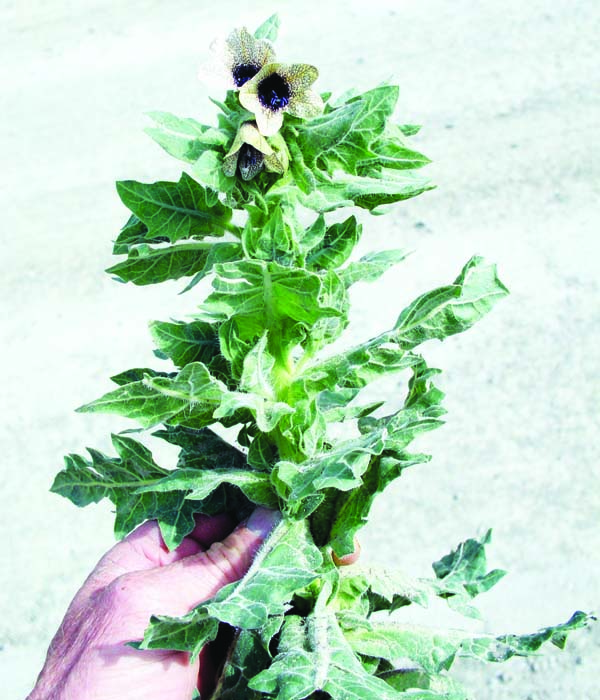Noxious weed of the week: Black henbane
Published 7:21 am Monday, August 7, 2023

- Black henbane can invade a variety of habitats, including established alfalfa fields.
The enemy
Black henbane (Hyoscyamus niger) is a Mediterranean native that was originally brought to this country as an ornamental and for medicinal purposes. It is a biennial plant that grows up to 4 feet tall.
The leaves are greatly lobed with a very conspicuous mid vein that runs the entire length of the leaf. The flowers are ivory with deep purple and form urn-shaped seed pods along the stems that are filled with hundreds of seeds.
This plant is narcotic and poisonous to humans. Please do not pull the dried seed heads and paint or flock them for ornamental use.
Black henbane invades fence rows, roadsides, ditch banks, overgrazed pastures and corrals, and disturbed waste areas.
It is even competitive enough to grow in established alfalfa fields. Its heavy basil rosette leaves cover the ground as to not allow other species to survive. As it is undesirable to livestock it can go untreated until it becomes a large problem.
The defense
Control of this species is fairly easy. As livestock will not eat it, leaving animals in the pasture for control it is not effective. If you see a few plants show up, simply dig them up, ensuring that you get at least 2 inches of the root below the ground. Make sure that you wear gloves as the plant will irritate your skin.
Telar XP and Escort XP, are the best herbicides to control this plant at 1 ounce per acre. For broader spectrum, utilizing Opensight herbicide is great. Herbicide applications can be from early rosette to bud. As this plant is very hairy, a good quality surfactant should be used. Please call your local weed authority for proper identification of this weed and any unidentified plants.






